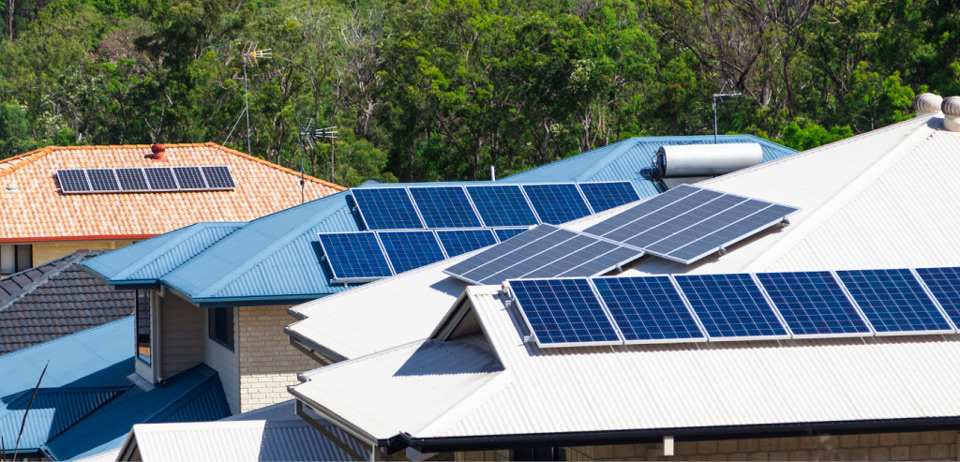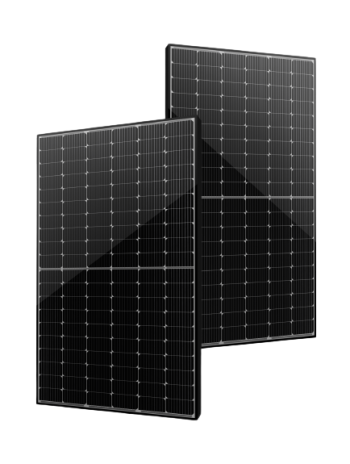Auswell Energy explains the different types of solar panels, and which is the best option for you.
There are so many types of solar panel systems on the market, and it can be confusing trying to understand the types of solar panels. Here, we will go over the three main types of solar panels, and which would be the best type for your home.
Monocrystalline Solar Panels
Monocrystalline solar panels are identifiable by their black colour, which makes them aesthetically pleasing, especially against darker roofs. These solar panels also have the highest efficiency rating ranging from 17% to 22%, meaning you are saving yourself more money on your power bill.
Even better, these solar panels have more than one type. Passivated Emitter and Rear Contact (PERC) solar cells use monocrystalline silicon cells and add a passivation layer to the back. This layer reflects solar radiation so the silicon can absorb more. This option makes monocrystalline panels more efficient, maxing at around 23%.
SWITCH TO SOLAR ENERGY
Polycrystalline Solar Panels
Polycrystalline solar panels are blue in appearance, meaning the modules absorb less light, resulting in lower efficiency, with ratings ranging from 15% to 17%. These solar panels are less expensive and an appealing offer for those who want to install solar panels on a budget. However, this lower price point comes with some setbacks:
- Polycrystalline solar panels are outdated technology, hence the lower price point
- They aren’t as efficient as monocrystalline solar panels, meaning whilst you may save some money on the installation, ultimately you will lose this saving in your power bills to come
How much can you save with solar? Use our Solar Savings Calculator.
Thin-film Solar Panels
Thin-film solar panels are flexible and lightweight panels made by placing a thin layer of photovoltaic materials on glass, plastic, or metal, and then sandwiching it between two panes of glass. The photovoltaic materials are generally:
- Amorphous silicon (a-Si)
- Copper gallium selenide (CIGS)
- Cadmium telluride (CdTe)
Thin-film solar panels are the cheapest but are the least efficient with efficiency ratings depending on the type of photovoltaic materials. CIGS is the most efficient with ratings ranging from 13-15%, next is CdTe with 9-11%, and the least efficient is a-Si with 6-8%.
This type requires a lot of panels to generate enough energy for a common household, so it’s best used for large scale solar farms.
Which is the Best Option for Me?
Monocrystalline panels are the best option for your solar power system, and if you’re willing to spare a bit more money PERC is a viable option too. Monocrystalline panels are efficient, and you don’t need a lot of panels or space to generate enough energy for your home. (See our preferred solar panels)
At Auswell Energy, we provide monocrystalline solar panel solutions for you! If you’re searching for an installation quote or you’d simply like some assistance navigating all the options, please contact Auswell Energy today! Call us on 1300 287 955 or email us at info@auswellenergy.com.au. No matter your query, our team will be able to support you.
Enjoy the benefits of renewable energy with Auswell Energy’s solar power installation service on the Gold Coast, and the Brisbane and Tweed Heads areas. Our experts provide high-quality, efficient solar solutions for clean power and reduced energy bills.
SHARE THIS ON:
Contact Auswell Energy!
Get in contact with Auswell Energy for a FREE consultation today! Just call us or send us your enquiries.




